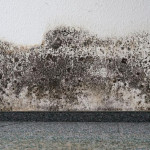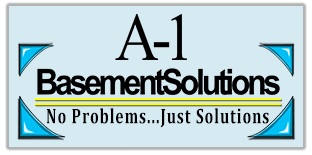Mold remediation is an essential process for maintaining a healthy living environment and protecting your home from long-term structural damage. Mold growth can occur in any building, given the right conditions—typically a combination of moisture, warmth, and organic materials. It poses not only health risks, especially for individuals with respiratory conditions, but also structural dangers as it deteriorates materials like wood and drywall. In this article, we will explore the causes of mold, the importance of mold remediation, and the steps involved in safely removing mold from a property.
Understanding Mold and Its Dangers
Mold is a type of fungus that thrives in damp, warm environments. It reproduces by releasing tiny spores into the air, which can land on surfaces and begin to grow if the conditions are right. Mold comes in various forms, including the well-known black mold (Stachybotrys), but other species like Aspergillus, Penicillium, and Cladosporium are also common in homes.
Mold poses several threats:
- Health Hazards: Exposure to mold spores can lead to respiratory issues, especially for those with asthma, allergies, or weakened immune systems. Symptoms can include coughing, sneezing, runny nose, itchy eyes, and skin irritation. Long-term exposure, particularly to toxic molds like Stachybotrys, can result in more severe health problems such as chronic respiratory illnesses.
- Structural Damage: Mold feeds on organic materials such as wood, paper, and fabric. Over time, it can weaken the structural components of a home, causing costly damage to walls, ceilings, floors, and even furniture.
- Aesthetic and Odor Issues: Mold is unsightly and can leave permanent stains on walls, ceilings, and other surfaces. It also produces a musty odor that can permeate the air, making the home uncomfortable and less appealing.
Causes of Mold Growth
Mold growth occurs when moisture levels are too high for an extended period. The following are common sources of moisture that can lead to mold growth:
- Leaky Pipes and Roofs: Water from leaking pipes, roofs, or appliances can seep into walls and floors, creating the ideal conditions for mold growth.
- Flooding or Water Damage: Homes that experience flooding or water damage, especially in basements and crawlspaces, are highly susceptible to mold growth if the water isn’t properly removed and the area fully dried.
- Condensation: In humid environments, condensation can form on cold surfaces like windows, pipes, or walls, leading to moisture accumulation and mold growth.
- Poor Ventilation: In areas like bathrooms, kitchens, and laundry rooms, poor ventilation can trap moisture, making these rooms prime locations for mold development.
Steps in Mold Remediation
Mold remediation is the process of identifying, containing, and removing mold from a property. While homeowners can sometimes handle small amounts of mold, significant mold infestations require professional intervention to ensure thorough and safe removal. The following are the key steps in mold remediation:
1. Inspection and Assessment
The first step in mold remediation is identifying the extent of the mold problem. This involves a thorough inspection of the affected areas, looking for visible mold as well as hidden growth behind walls, under floors, and in other concealed spaces. In some cases, air quality tests or surface samples may be taken to determine the concentration and type of mold present.
Professional mold inspectors use moisture meters and infrared cameras to detect hidden mold growth and identify areas of moisture buildup. This step is crucial for creating an effective remediation plan.
2. Containment
Once the affected areas are identified, it’s important to contain the mold to prevent it from spreading to other parts of the home. This is especially critical during the removal process, as mold spores can become airborne and travel through the house.
Containment methods include sealing off the affected area with plastic sheeting and using negative air pressure to prevent spores from escaping. HEPA air filters may also be employed to capture airborne mold spores and improve air quality during the remediation process.
3. Mold Removal
The actual mold removal process involves several techniques depending on the severity of the infestation:
- Cleaning and Disinfecting: Non-porous surfaces like glass, metal, and tile can be scrubbed and disinfected to remove mold. The affected areas may need to be removed and replaced for more extensive mold growth on porous materials like wood and drywall.
- Dry Ice Blasting: This method uses dry ice pellets to blast away mold from surfaces. It’s particularly effective for removing mold from hard-to-reach areas, such as crawlspaces and attics, and leaves no residue behind.
- Antimicrobial Treatments: After removing visible mold, surfaces are treated with antimicrobial solutions to kill any remaining mold spores and prevent future growth.
4. Air Filtration and Dehumidification
Throughout the mold remediation process, air filtration systems with HEPA filters are used to remove mold spores from the air. This ensures that any airborne spores released during removal are captured before they can settle in other parts of the home.
Dehumidifiers are also employed to reduce moisture levels in the affected area. Lowering humidity to below 50% helps prevent mold from re-establishing itself.
5. Repair and Restoration
Once the mold has been removed, the final step is to repair any damage caused by the mold or by the remediation process. This may include replacing drywall, repainting walls, and repairing any structural damage. In addition, addressing the source of moisture—such as fixing leaks or improving ventilation—is essential to prevent future mold growth.
Preventing Mold Growth After Remediation
Preventing mold growth requires ongoing attention to moisture control. Homeowners can take several steps to reduce the risk of mold recurrence:
- Fix Leaks Promptly: Any leaks in the plumbing or roof should be repaired as soon as they are detected to prevent water from seeping into walls and floors.
- Improve Ventilation: Ensure that areas like bathrooms, kitchens, and laundry rooms are well-ventilated. Installing exhaust fans and using dehumidifiers can help reduce moisture levels in these spaces.
- Monitor Humidity Levels: Use a hygrometer to monitor the humidity levels in your home, particularly in basements, crawlspaces, and other areas prone to dampness. Keeping humidity below 50% is ideal for preventing mold growth.
- Insulate Pipes and Windows: Condensation on cold surfaces like pipes and windows can create moisture problems. Insulating these areas can reduce the risk of mold growth.
- Waterproof Basements and Crawlspaces: Waterproofing your basement or crawlspace helps prevent moisture from entering the home, reducing the likelihood of mold growth.
The Importance of Professional Mold Remediation
While minor mold issues may be handled by homeowners, extensive mold growth or toxic mold infestations require professional mold remediation. Attempting to remove large mold infestations without proper containment can spread the spores throughout the house, worsening the problem. Professional mold remediation companies have the experience, equipment, and techniques needed to safely and effectively remove mold, ensuring it does not return.
Mold remediation is crucial for protecting your home and health from the dangers of mold. Identifying the source of moisture, containing the affected area, and properly removing the mold are essential steps in the process. By taking preventive measures, such as reducing humidity and fixing leaks, homeowners can minimize the risk of future mold growth. For larger infestations, professional mold remediation services provide the best solution to keep your home mold-free and ensure a healthy living environment.
Contact the Professionals at A-1 Basement Solutions Today! 908-322-1313





